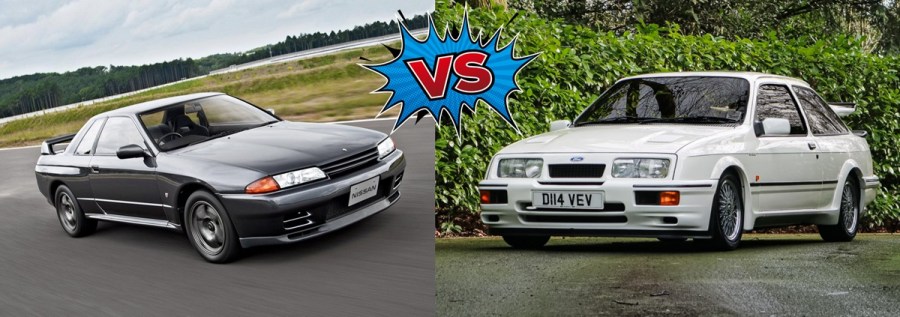A legendary Group A race rivalry of the early ’90s, we look at the incredible battle between the Nissan Skyline R32 GT-R vs Ford Sierra RS500 Cosworth.
The main reason the late ’80s and early ’90s had so many incredibly tunable road cars is down to one thing, Group A homologation. Of course, manufacturers will always bring out performance models if they feel there is a market for them, and some of them will co-incidentally be great platforms for tuning. But the massive number of them in that era was no accident, as it was done by the manufacturers to make them eligible for Group A circuit racing and rallying.
For a car to be eligible to be used in Group A, a minimum of 5000 road car examples had to be built, and while of course countless parts were allowed to be upgraded, many important parts had to remain standard, especially on the engine side of things. Because of this, the roadgoing versions were capable of absolutely massive power increases even on the standard components.
While some Group A rules varied depending on the championship in question, all the cars needed to use many of the same parts, such as the same basic turbo size, inlet and exhaust manifolds, cylinder heads, rods, crankshaft, and intercooler, as the production model. That meant that many production cars of that era left the factory with engines that are easily capable of upwards of twice the standard power, and two of the most iconic are the Nissan Skyline R32 GT-R and the Ford Sierra RS500 Cosworth.
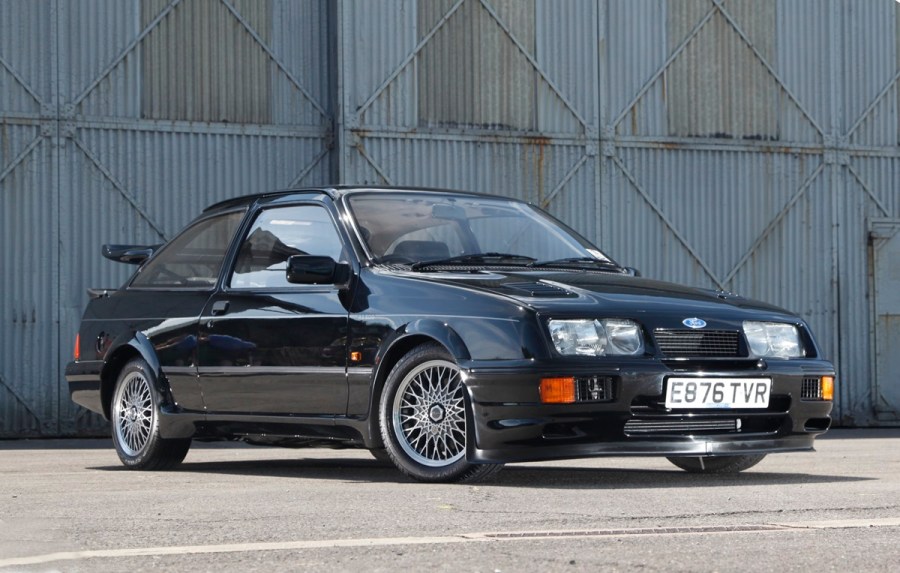
Ford Sierra RS500 Cosworth
While not named as one, the RS500 is an evolution model of another Group A homologation special, the Sierra RS Cosworth, and that in itself had some influence from another successful Group A Sierra race car, the US Market XR4Ti.
Ford Motorsport Europe planned to create a race version of the Sierra as early as 1983, and while current Ford engines wouldn’t be good enough for their goals of a 300bhp capable Group A race car, they commissioned Cosworth to create something new particularly for this project. The YB Turbo engine is what resulted, which while based on the Ford Pinto engine block, was an otherwise all-Cosworth design.
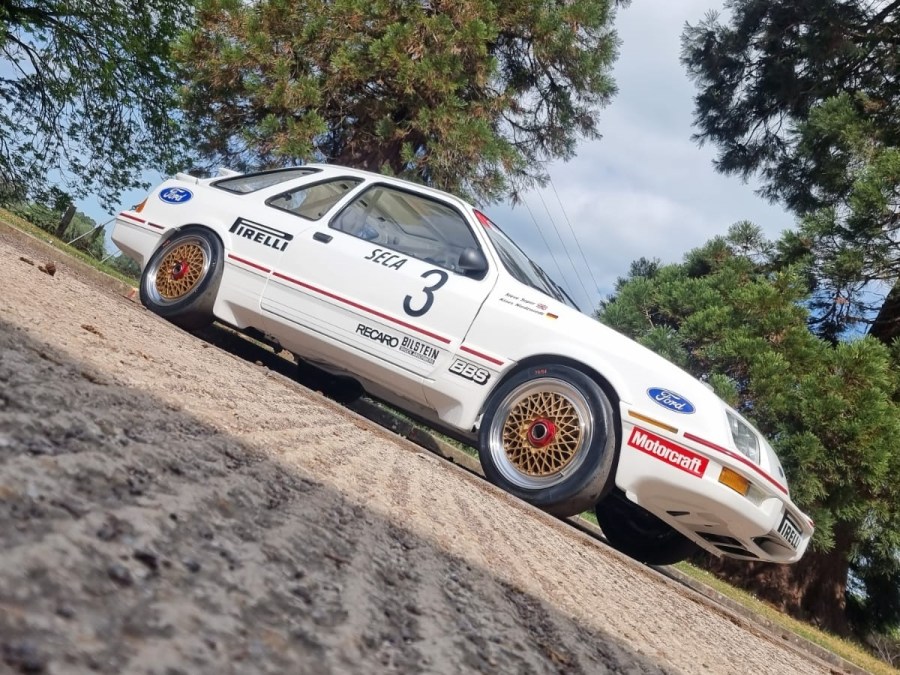
Merkur XR4Ti Group A race car.
XR4Ti sets the tone
While this car was being designed, an XR4Ti – the American market version of the European XR4i V6, powered by a 2.3-liter 4-cylinder turbo engine – was brought to the UK and raced in the British Touring Car Championship in 1985 and 1986 with great success. It won 9 of the 11 races it entered in 1985, and while in ‘86 the car was plagued with reliability issues, it still won 5 out the 6 races it managed to finish.
The success of the XR4Ti showed Ford Motorsport that they were potentially on to a winner with the Sierra plan, and they even used some of the parts developed for the XR4Ti on the RS Cosworth race cars. Additionally, that car demonstrated that the original 300bhp goal wasn’t enough if they wanted to dominate Touring Car racing around the world, and from that, the RS500 plan came about.

Power-hungry
Group A rules, while requiring 5000 production cars to be made, also allowed Evolution versions of these cars to be homologated, and for that only 500 production car versions were needed. So, as soon as enough of the original RS Cosworths were made, RS500 production began.
While at first glance the cars look practically the same, sharing the same 3 door shell, a broadly similar bodykit, and both having the 2-liter turbo YB Cosworth engine and rear wheel drive, the RS500 had some very key differences.
While the original RS Cosworth came with a Garrett T3 turbo capable of around 350 horsepower at most, the RS500 had what is still the biggest turbocharger ever fitted to a 2-liter production car, a hybrid Garrett T3/4, capable of upwards of 550bhp. In fact, later Australian Touring Cars were said to have made over 600 horsepower with these. As a modern comparison, the homologated wheel sizes for the RS500 turbo are almost identical to the current Garrett G35-770, which as the name suggests, is a 770 horsepower rated turbo!
It wasn’t just a bigger turbo either, a massive front mounted intercooler was fitted that was far bigger than even the car’s radiator. A bigger inlet manifold with 8 fuel injectors was added, as well as an even stronger engine block, modified bumpers, splitters, and spoilers for improved aerodynamics. Under the skin, there was a host of small changes to the suspension and chassis.
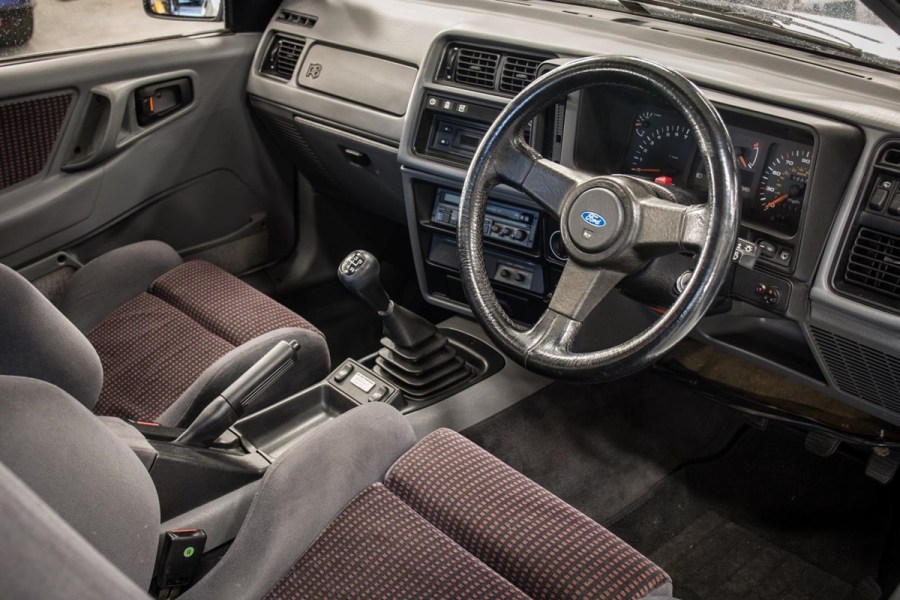
Reality on the road
As a road car the RS500 was nothing but a thinly disguised homologation special. It had only 20 horsepower more than the standard RS Cosworth, but the massive turbo meant you had to be above 4500rpm for any worthwhile performance. So in most circumstances the original model was a faster car, but Ford didn’t care about that, they built this thing so it could race.
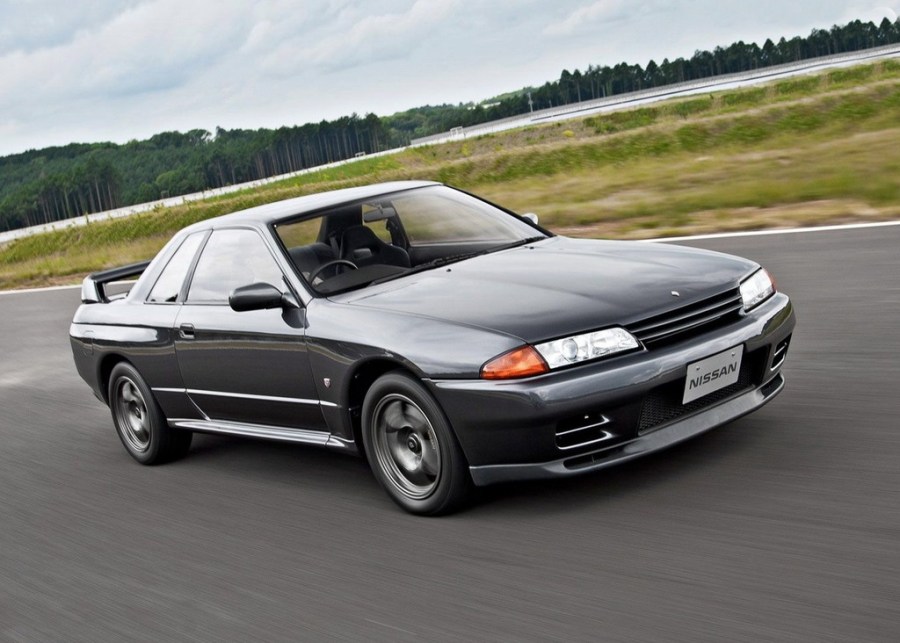
Nissan Skyline R32 GT-R
While a somewhat controversial thing to say, the main reason the R32 GT-R came in to existence is because of the RS500 Cosworth. Just like Ford all those years earlier, Nissan wanted a car to dominate Group A circuit racing, and unfortunately for them, the RS500 had dominated the Japanese Touring Car Championship in 1987 and 1988, and even with ever increasing weight and boost restrictions put on the cars to try and slow them down, it still won the 1989 manufacturers championship. Nissan had their own Group A homologation special competing, the R31 Skyline GTS-R, but while a seriously fast car, it just wasn’t enough to seriously challenge the Sierras.
So for 1990 it was time for the R32 GT-R, a car that, on paper at least, was leagues away from anything else in Group A racing. And, thanks to homologation rules meaning road car versions had to exist, the incredible tuning scene based around Skyline GT-Rs that we know and love to this day, was also born.

Genesis of the RB26
Having had multiple years to see where Group A racing was going, Nissan knew they had to go all-in from the start, so went straight to a 2.6-liter twin turbo inline 6 engine that was specifically designed for this purpose, along with a sophisticated motorsport orientated active all-wheel drive system that at the time was practically unheard of in its abilities. It was a bigger and heavier car than the RS500, but with all-wheel drive and around 550 horsepower right from the start, it was instantly competitive.
Just like the RS500, the fact that Group A rules stated the basic engine, manifolds, turbo setup, intercooler, and drivetrain had to be the same in the road car, meant buyers of production R32 GT-Rs (while only making around 280bhp from the factory), got an insanely tunable and strong RB26DETT engine. As fans will know, it runs individual throttle bodies, twin Garrett turbos, a gigantic front mount intercooler, and the aforementioned fantastic all-wheel drive system, meaning enormous power increases had never been so easy to achieve from a tuned road car.
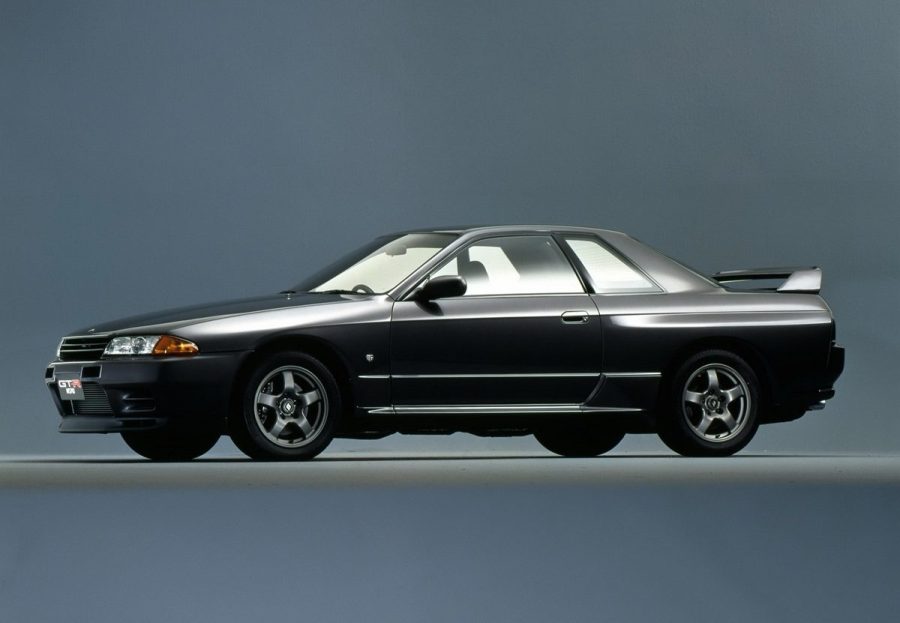
NISMO
Just like the RS500 was built as an Evolution model to the original RS Cosworth, Nissan did exactly the same with the R32 GT-R, albeit in milder form as the original car was already absolutely wild. This version is called the R32 GT-R Nismo, Nismo being ‘Nissan Motorsport’, and on the face of it you’d struggle to notice the differences on the road car versions, especially as these days the majority of R32 GT-Rs have at least some of the Nismo extras fitted!
Among the changes were extra vents in the front bumper and small bonnet and boot lid spoilers. Plus, while under the bonnet they look almost identical, the turbos were upgraded to higher flow turbine wheels and 47mm inducer compressor wheels. In modern turbo terms that’s the same size compressor as many 500bhp+ capable turbochargers.
Just like the RS500 gained a stronger engine block vs the normal Cosworths, the R32 GT-Rs soon gained an improved engine block called the 24U, more commonly known as an N1 block, which to this day is the go-to block for big power. The 24U block has a thicker deck surface and is stronger around the head bolt threads, so is much less susceptible to cracking at big power levels.
On the circuit, the Nissan Skyline R32 GT-R vs Ford Sierra RS500 Cosworth battle ran throughout the early ’90s, culminating in a bad-tempered showdown at the Mount Panorama, Bathurst circuit. On the streets, however, it lasted way longer than that. With GT-Rs and Cosworths being so popular in the tuning scene in the 2000s, this rivalry carried on at traffic lights and local meets long after these legendary Group A race cars went in to retirement…

